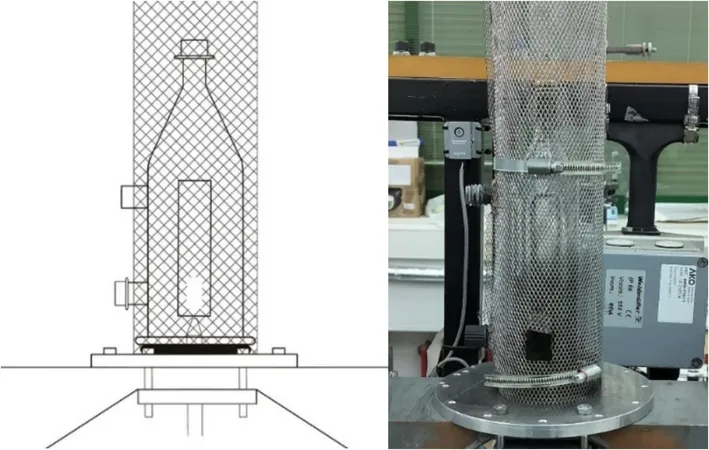
Revolutionary Plasma Technology Increases Graphene Production by Over 22% – A Game Changer for Industry!
2024-10-10
Author: Mei
Introduction
In an exciting breakthrough for material science, graphene—a substance celebrated for its remarkable properties, including being tougher than diamonds, stronger than steel, and as flexible as rubber—may soon be produced more efficiently than ever before. Researchers from the University of Córdoba (UCO) have unveiled a new plasma-based technological design that enhances graphene production by over 22%. This advancement promises to not only boost output but also ensure the high quality synonymous with graphene, which was first synthesized in 2004, earning its discoverers a Nobel Prize six years later.
Challenges in Graphene Production
Despite the enormous potential of graphene, widespread industrial production has remained elusive due to high manufacturing costs and sustainability issues. The newly developed prototype, detailed in the journal Chemical Engineering Journal, represents a significant stride towards resolving these challenges.
The Role of Plasma Technology
The innovation centers around plasma technology, an energetic medium often referred to as the fourth state of matter. Plasma can be found in nature, such as in lightning and the Northern Lights, but researchers can also produce it in controlled laboratory settings. Francisco Javier Morales, the lead author of the study, emphasized the efficiency of plasma, stating that it can easily break down organic molecules. The research team specifically utilized a plasma torch to decompose ethanol, rearranging its carbon atoms into the graphene structure.
Energy Optimization and Production Increase
A groundbreaking feature of this new process is its energy optimization, dramatically increasing production efficiency. Rocío Rincón, the principal investigator, highlighted that previous iterations of their graphene synthesis method saw a staggering 43% of energy dissipated and wasted. To mitigate this loss, the research team integrated a Faraday cage around the plasma, a metallic mesh that provides electromagnetic shielding akin to that found in microwave ovens. This innovative addition has allowed for a production increase, yielding 5.2 milligrams of graphene per minute per watt, compared to the previous output of 4.3 milligrams.
Implications for Various Industries
This advancement is not just a win for researchers—it could have far-reaching implications across various industries. Graphene's potential extends to electronics, energy storage, and even biomedical applications. With cheaper and more efficient production methods, a future where graphene-enabled technologies are commonplace may come sooner than expected.
Conclusion
Stay tuned, as the implications of this breakthrough unfold! Are we on the precipice of a graphene revolution? The research community and industries worldwide are certainly watching closely.





 Brasil (PT)
Brasil (PT)
 Canada (EN)
Canada (EN)
 Chile (ES)
Chile (ES)
 España (ES)
España (ES)
 France (FR)
France (FR)
 Hong Kong (EN)
Hong Kong (EN)
 Italia (IT)
Italia (IT)
 日本 (JA)
日本 (JA)
 Magyarország (HU)
Magyarország (HU)
 Norge (NO)
Norge (NO)
 Polska (PL)
Polska (PL)
 Schweiz (DE)
Schweiz (DE)
 Singapore (EN)
Singapore (EN)
 Sverige (SV)
Sverige (SV)
 Suomi (FI)
Suomi (FI)
 Türkiye (TR)
Türkiye (TR)